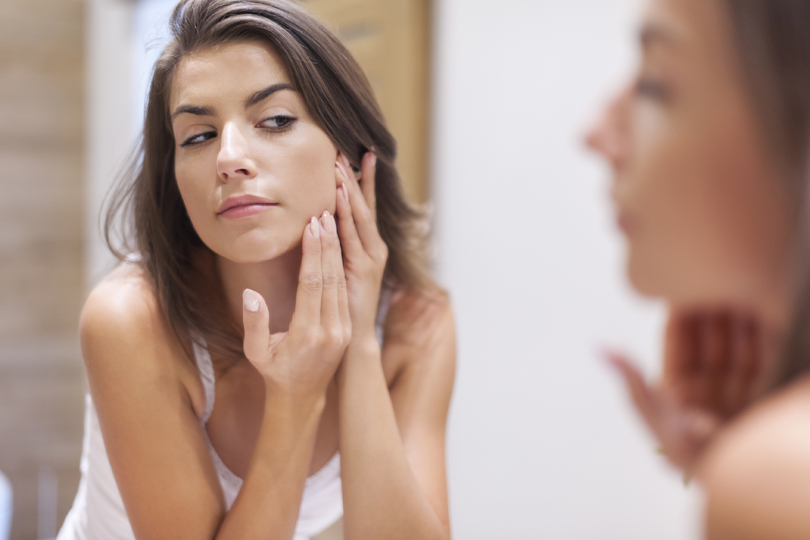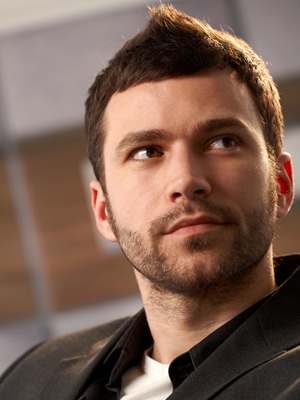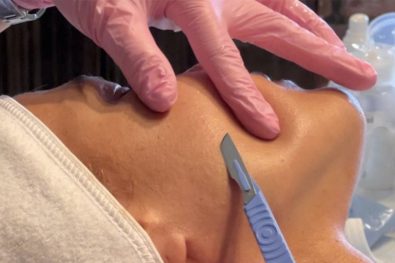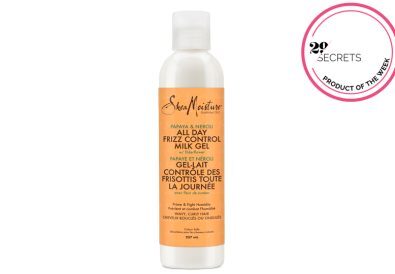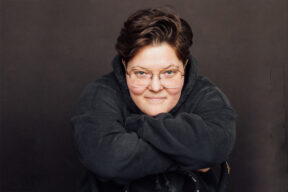Believe it or not, attending an all-girls Catholic high school made my experience as a teenager a lot easier than most. I mean, yeah, school was pretty boring, nothing exciting happened very often, but it was great because of the lack of pubescent male energy and attention. Without worrying about cute or mean boys, made getting ready for school in the morning pretty simple: wash up, get dressed in my mandatory uniform and draw on a thick stroke of liner across my upper lash line and voila, I was ready. But to completely honest, I really didn’t have much to fuss about. Because unlike almost all of my girlfriends, puberty was pretty damn good to me. Looking back, I remember just observing and thinking to myself “OMG, suck it up,” as girls in the hall offered each other Advils for their period cramps, and “It’s not even that bad,” when my friends complained about their fluctuating body weights, oily T-zones and whiteheads. Meanwhile, all I complained about were my uneven brows.
But of course, this all changed when I finally caught up to puberty…. in my 20’s. As my friends we’re blossoming in the midst of their glow up phase, I was experiencing the exact opposite. At 21, I experienced dysmenorrhea and menorrhagia for the very first time, ultimately changing my number of period days (URGH!). At 22, I finally decided to get braces. Adult braces are no big deal BTW but what made it worse was that at 23-years old I experienced my first real acne breakout — popped rice-looking bumps gradually appeared all over my forehead. This happened during the winter so my plan was to wear a hat and hide it all season until larger, painful bumps appeared on the sides of my chin. My hormones were literally pulling a Benjamin Button on me — I looked like a 16-year old. This was the absolute worse thing, especially since people actually had the audacity to point out that my skin sucked.
After three years of testing out the waters and getting familiar with acne-fighting ingredients, I found one ingredient that does a pretty amazing job: Glycolic acid. It helps eliminate larger active pimples fast and reduces the size of pores, but still doesn’t prevent my acne from returning. So why am I still breaking out at almost 26 years old? Is it something I’m eating? Is it because I’m not sleeping on time? What is actually causing my breakouts?
Luckily for me, I had the opportunity to chat with Stanford-trained dermatologists and founders of Rodan+Fields Dr. Katie Rodan and Dr. Kathy Fields, both best known for the creation of the iconic Proactiv Solution, to get some real answers.
Although we all know that diet, mood/stress and the environment can take a toll on our skin, but the underlying culprit causing 85 per cent of teens and 40 per cent of women to experience mild to chronic acne is hormones. “Acne: It’s common, chronic and complicated and NOT curable,” says Fields. “It’s so complicated that we have to continue to treat it in a comprehensive way.”
Going back to the basics, acne-prone skin is a genetic trait (thanks, mom and dad) where the pores of the skin get easily blocked. Teenagers and women are affected the most due to their high surges of hormones that cause an over-production of different types of sebum. According to Rodan, the science of acne all starts within the Microbiome or Microfilm. The microbiome is a colony of good bacteria that live on the surface of the skin and travels throughout the pores, maintain the balance of the skin’s PH levels with the help of oxygen. “As the microbiome is living on the surface here it’s bathing in oxygen — it’s behaving itself,” Rodan explains as she draws a diagram of the microbiome travelling through the skin. As the microbiomes travel through the pore, the environment down there has a lack of oxygen. That causes a dramatic shift in the bacteria.”
As the bacteria in the microbiome aka the P-acnes are starving of oxygen, it goes into a protective frenzy and starts producing toxins, attacking the other good bacteria that its been thriving with causing swelling and inflammation. The inflammation sparks an angry cycle and forms a clogged pore, ultimately forming cystic acne. “This whole process didn’t happen because yesterday you ate a chocolate bar, that’s not the way it works. This happened over the course of two to four weeks. That’s why treating the whole face is really key because we want to treat all the 10 thousand pores on your face to really [control] this process,” Rodan explains.
As practising dermatologists for over 30 years who witness and who have experienced the negative emotional side effects of acne, Rodan and Fields continue to help millions with problematic skin. The solution? With the new knowledge of the microbiome and the change in oxygen tension as you go down into the pore, they created a new approach to teen and adult acne.
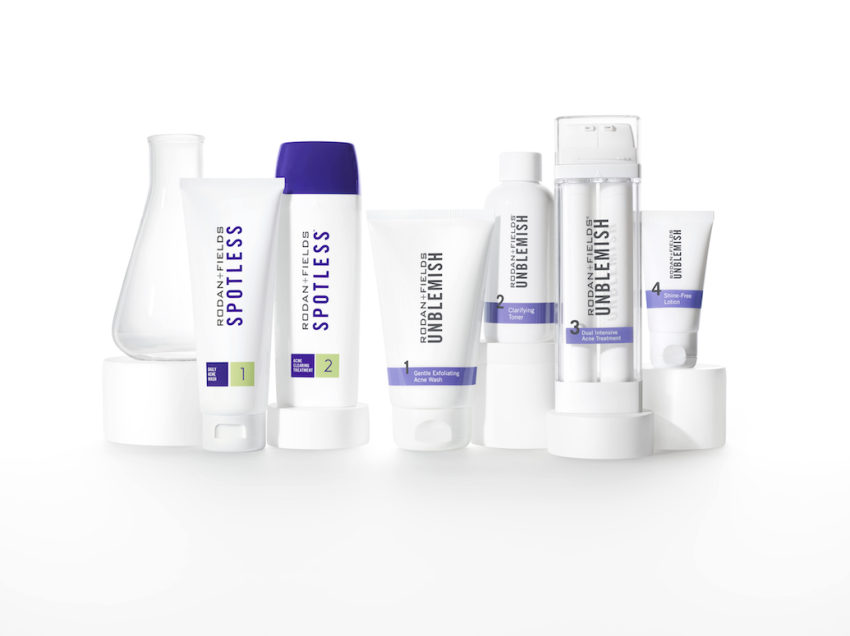
Rodan+Fields Spotless Regimen, $102
Designed for teens, this quick and easy two-step system formulated with a new Benzoyl Peroxide (BPO2) technology to target acne-causing technology deep within the pore. The technology uses an Oxygen-boosting matrix that allows the benzoyl peroxide into easily into pores and the skin’s surface, to neutralize acne bacteria. The Daily Acne Wash combined with the Acne clearing treatment is said to deliver an even, bright and clear complexion.
Rodan+Fields Unblemish Regimen, $216
This four-step system includes a newly formulated Gentle Exfoliating Wash, Clarifying Toner, Dual Intensive Acne Treatment and a Shine-free Lotion with SPF. Made with Benzoyl Peroxide, this acne-fighting system also includes Salicylic acid to prevent redness and clogged pores. Designed for adults, this system also targets visible skin-ageing concerns such as elasticity loss, uneven texture and sensitivity on top of fighting acne using a Multi-Med Therapy to treat the entire face and to ensure a more radiant and healthy complexion.
So maybe acne isn’t something all of us can outgrow (heck, adult acne can even stick around for even 20 years, according to Rodan and Fields!). “ I think the basic thing [to understand] is you can’t control the underlying driver [hormones] of it [acne]. I think lifestyle, in general, is important. Leading a healthy, calm lifestyle will simply help it [acne] and using products that are going to keep your skin well exfoliated and cleansed to stop those pores from getting clogged,” explains Dr. Timothy Falla Chief Scientific Officer at Rodan + Fields. Being proactive is definitely the first and best step in treating your acne. The last thing you want to do is leave it alone, which may cause infection and irreversible scarring, or stress out about it. I understand how it eats you up, but if you find that self-treating the acne at home is still too overwhelming for you handle on your own, make a trip to your dermatologist to figure out what’s best for you.

